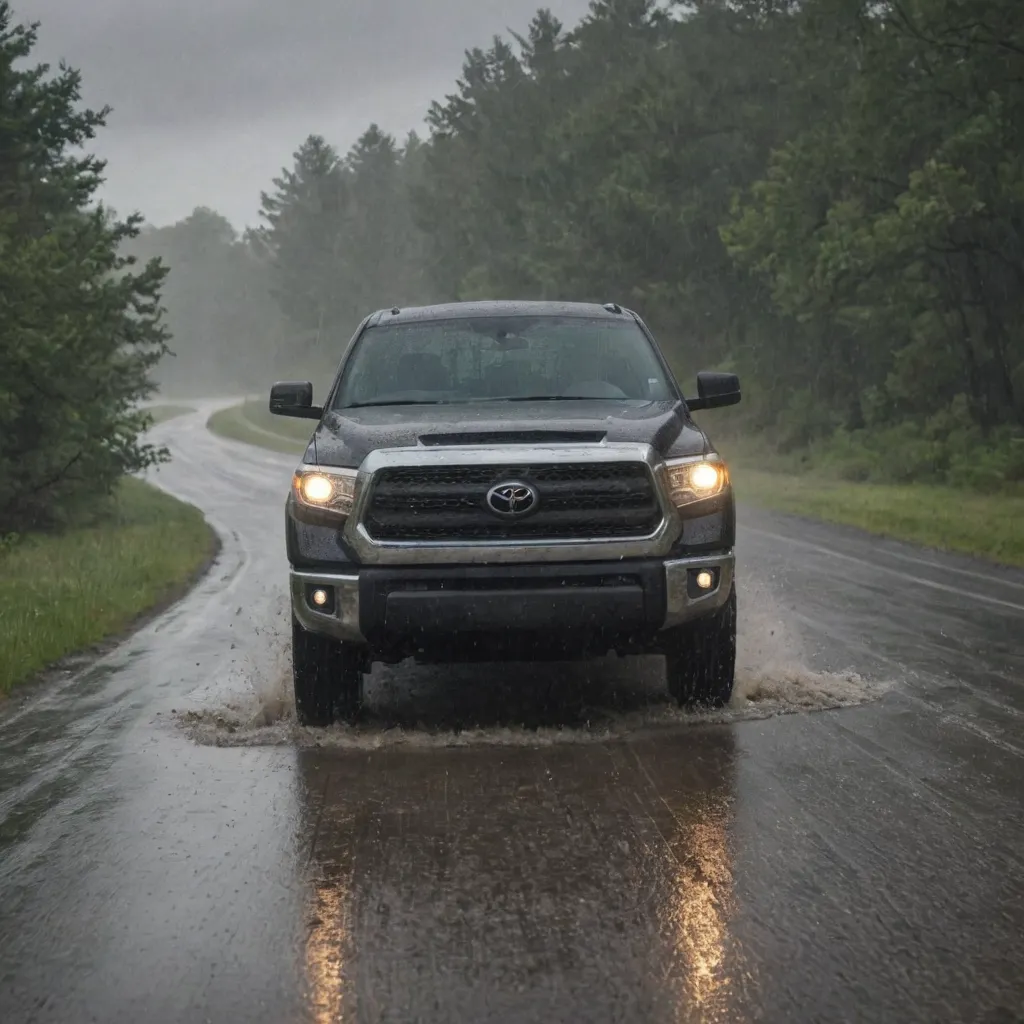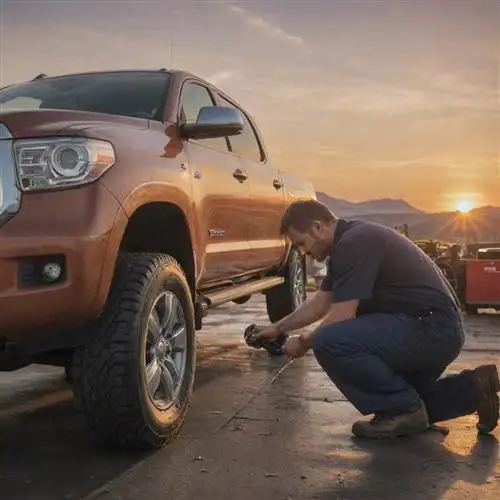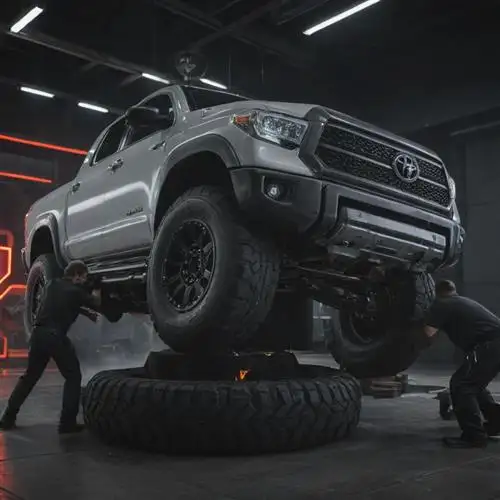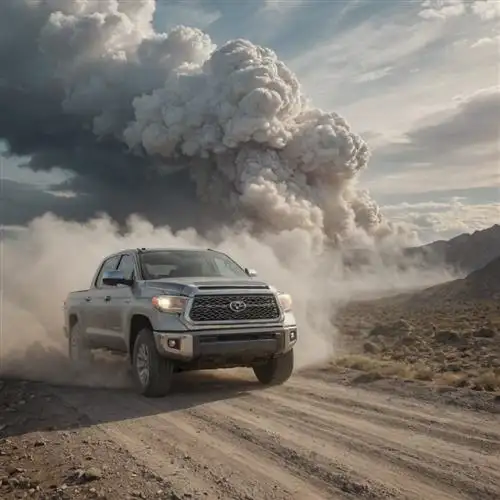
Tundra Oil Change Routine
Maintaining the oil change schedule for your Toyota Tundra is crucial for the longevity and performance of your vehicle. While the manufacturer recommends an oil change every 5,000 to 10,000 miles, depending on your driving conditions and habits, you may need to adjust the frequency. Here are some valuable insights to optimize your Tundra's oil change routine:
Utilize high-quality synthetic oil. Synthetic oils offer superior protection against wear, breakdown, and sludge buildup compared to conventional blends. Look for oils that meet or exceed the manufacturer's specifications, typically API SN or ILSAC GF-5 ratings.
Pay attention to your driving conditions. If you tow heavy loads, frequent off-road excursions, or operate in extreme temperatures, you may need to change your oil more frequently. Consult your owner's manual or speak with a trusted mechanic to determine the optimal interval for your usage.
Be mindful of your oil level. Regularly check the dipstick and top up the oil if necessary. Maintaining the proper oil level is essential for proper lubrication and engine health. Avoid overfilling, as this can lead to issues as well.
Consider oil analysis. By sending a small sample of your Tundra's oil to a laboratory, you can gain valuable insights into the condition of your engine components and the quality of the oil. This can help you identify potential problems early and adjust your maintenance schedule accordingly.
Utilize high-quality oil filters. The oil filter plays a critical role in removing contaminants from the oil. Invest in a premium filter that meets or exceeds the manufacturer's recommendations to ensure optimal engine protection.
Flush the oil system periodically. Over time, sludge and deposits can build up in the oil system. Flushing the system can help remove these contaminants and restore the oil's effectiveness. Consult your owner's manual or a trusted mechanic to determine the appropriate interval for this procedure.
Tundra Brake Maintenance Essentials
Ensuring the health of your Toyota Tundra's brakes is crucial for safe and reliable performance. Proper maintenance can extend the lifespan of your braking components and prevent costly repairs down the line. Let's dive into the essential aspects of Tundra brake maintenance that every owner should know.
Brake Pad Inspection and Replacement: Regular inspection of your Tundra's brake pads is a must. Look for signs of uneven wear, thinning, or cracking. When the pads reach the minimum thickness specified by Toyota, it's time to replace them. Neglecting this can lead to damage to the brake rotors, which are more expensive to repair or replace.
Brake Rotor Resurfacing or Replacement: Brake rotors play a crucial role in your Tundra's braking system. Over time, they can become warped, grooved, or unevenly worn. If the rotor thickness falls below the minimum specification, they'll need to be resurfaced or replaced entirely. Ignoring this can compromise braking performance and safety.
Brake Fluid Flushing: Brake fluid is essential for transmitting the force from the brake pedal to the calipers. Over time, the fluid can become contaminated with moisture, which can lead to corrosion and decreased braking effectiveness. Regularly flushing the brake system, as recommended by Toyota, is important to maintain optimal braking performance.
Caliper Inspection and Maintenance: Your Tundra's brake calipers are responsible for squeezing the brake pads against the rotors. Inspect the calipers for signs of leakage, binding, or sticking. If the calipers are not functioning correctly, they'll need to be serviced or replaced to ensure reliable braking.
Brake Hardware Replacement: The hardware that holds your Tundra's brake system together, such as shims, slides, and pins, can wear out over time. Replacing these components during a brake service can help prevent problems like brake noise, uneven pad wear, and even brake failure.
Brake System Cleaning and Lubrication: Keeping your Tundra's brake components clean and properly lubricated is essential for their longevity and performance. Use the recommended brake cleaning products and lubricants to ensure smooth operation and prevent premature wear.
Tundra Tire Rotation Techniques
Rotating your Tundra's tires is a crucial aspect of maintaining the longevity and performance of your vehicle. The front and rear tires on your Tundra experience different levels of wear and tear due to the weight distribution and driving dynamics. Regularly rotating the tires ensures even wear, improves fuel efficiency, and enhances the overall handling and safety of your Tundra.
When it comes to Tundra tire rotation, there are a few techniques you can employ to ensure optimal results. The most common and recommended method is the "X" pattern. In this technique, the front tires are moved to the rear axle, crossing over to the opposite side. The rear tires are then moved to the front axle, again crossing over to the opposite side. This pattern helps to evenly distribute the wear on all four tires, ensuring they wear at a similar rate.
Another effective technique is the "Rearward" rotation. In this method, the rear tires are moved to the front axle, while the front tires are moved to the rear axle, but without crossing over. This approach is often recommended when the Tundra's tires exhibit uneven wear, as it can help to even out the wear pattern.
It's important to note that the specific tire rotation pattern recommended for your Tundra may vary depending on the vehicle's drivetrain and the tire manufacturer's guidelines. Always refer to your owner's manual or consult with a professional automotive technician to determine the best rotation pattern for your Tundra.
Regardless of the technique you choose, it's crucial to rotate your Tundra's tires at the recommended interval, typically every 5,000 to 8,000 miles. This interval may need to be adjusted based on your driving conditions and the wear patterns observed on your tires.
When rotating your Tundra's tires, it's also essential to ensure that the tire pressure is properly maintained. Uneven tire pressure can lead to premature wear and decrease the effectiveness of the tire rotation. Always check and adjust the tire pressure to the recommended levels specified by the manufacturer.
Tundra Air Filter Replacement Guide
Maintaining your Toyota Tundra's air filter is a crucial aspect of keeping your truck running at its best. The air filter plays a vital role in ensuring your engine receives clean, uncontaminated air, which is essential for optimal performance, fuel efficiency, and engine longevity. In this guide, we'll dive deep into the ins and outs of replacing your Tundra's air filter, providing you with the knowledge and confidence to tackle this task with ease.
The first step in replacing your Tundra's air filter is to determine the exact model and year of your vehicle, as well as the engine size. This information will ensure you purchase the correct replacement filter that fits your specific Tundra. Consult your owner's manual or contact your local Toyota dealer to get the precise part number for your air filter.
- Replacement air filter
- Shop towels or clean rags
- Flathead or Phillips screwdriver
- (Optional) Compressed air or a small vacuum cleaner
- Locate the air filter housing, typically situated near the top of the engine compartment or behind the front grille.
- Unlock or remove the cover of the air filter housing, usually secured by clips or screws.
- Carefully remove the old air filter, taking note of its orientation and position within the housing.
- Inspect the air filter housing and the surrounding area, cleaning out any accumulated debris or dirt with the compressed air or vacuum cleaner.
- Insert the new replacement air filter, ensuring it is properly seated and oriented in the same way as the old filter.
- Replace the air filter housing cover and secure it back in place, making sure it is fully locked or tightened down.
In addition to regular replacement, it's essential to keep your Tundra's air filter clean between changes. This can be done by gently blowing out the filter with compressed air or using a small vacuum cleaner to remove any accumulated dust and debris. Avoid using water or cleaning solvents, as they can damage the filter media.
The recommended frequency for replacing your Tundra's air filter varies depending on your driving conditions and usage. As a general guideline, it's a good idea to replace the air filter every 12 to 24 months or when it appears excessively dirty or clogged. Consult your owner's manual or speak with your Toyota dealer to determine the optimal replacement interval for your specific vehicle.
Tundra Windshield Wiper Maintenance Tips
Maintaining your Toyota Tundra's windshield wipers is crucial for ensuring clear visibility and safe driving. Over time, the rubber on the wiper blades can become cracked, worn, or dried out, reducing their effectiveness. By following these tips, you can keep your Tundra's wipers in top condition and extend their lifespan.
Inspect the Blades Regularly: Visually inspect your windshield wiper blades every few months for any signs of wear, such as cracking, splitting, or hardened rubber. Run your fingers along the edge of the blades to feel for any rough or uneven spots, which can indicate the need for replacement.
Clean the Blades: Dirt, debris, and road grime can accumulate on the wiper blades, causing them to streak or smear. Use a clean, damp cloth to gently wipe down the blades, removing any built-up residue. Avoid using harsh cleaners or solvents, as they can damage the rubber.
Check for Proper Positioning: Ensure that your Tundra's wiper blades are positioned correctly on the windshield, making full contact with the glass. If the blades are not properly aligned, they may not effectively clear the windshield, leading to poor visibility.
Replace Blades Regularly: As a general rule, it's recommended to replace your Tundra's windshield wiper blades every 6 to 12 months, or as soon as you notice a decline in their performance. This will ensure that you have a clear, streak-free view of the road ahead.
Consider Special Wiper Blades: For enhanced performance, you may want to consider upgrading to specialty wiper blades designed for the Tundra. These can include features like silicone-coated rubber, aerodynamic designs, or dual-blade construction, which can improve wiping efficiency and extend the life of the blades.
Protect the Blades: When your Tundra is not in use, lift the wiper arms off the windshield to prevent the blades from becoming stuck or distorted. This can help maintain their shape and flexibility, prolonging their lifespan.
















